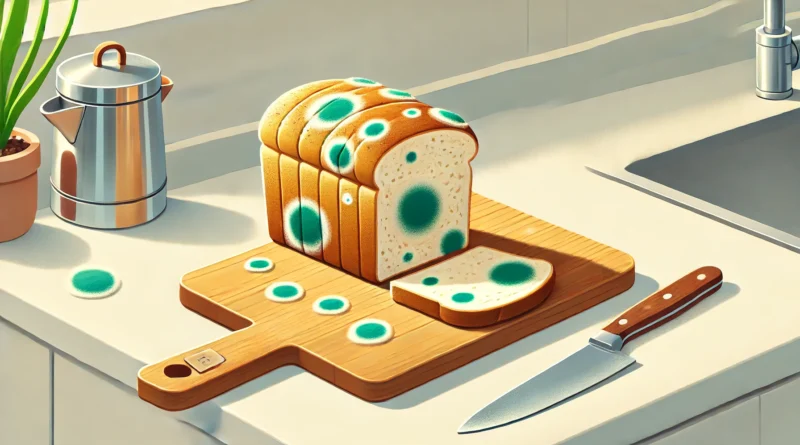Can You Really Just Cut Off the Mold and Eat the Rest?
Finding mold on bread is always disappointing, and for many, the instinct is to simply cut off the moldy part and eat the rest. But is this a safe practice, or are you risking your health?
What Is Mold, and Why Does It Spread?
Mold is a type of fungus that grows by producing spores, which can spread throughout the food, even if they’re not always visible. Bread, due to its porous nature, is particularly susceptible to mold growth. Once you see visible mold, its root-like structures, known as hyphae, have likely spread throughout the loaf—even to parts that appear clean.
According to experts at the USDA, once mold has appeared on any porous food like bread, it’s best to throw the entire loaf away. Cutting off visible mold doesn’t eliminate the risk, as the spores have likely spread beyond what you can see(Science Notes).
What Happens If You Eat Moldy Bread?
Eating moldy bread can have varying effects. For most people, accidentally consuming small amounts of mold may result in minor digestive issues like nausea or vomiting. However, for people with allergies or weakened immune systems, consuming or even inhaling mold spores can trigger more severe reactions, such as respiratory problems or even infections(Science Notes).
Certain molds can produce mycotoxins, harmful substances that have been linked to respiratory issues, immune system suppression, and in extreme cases, even cancer. Molds like Aspergillus and Penicillium are common on bread, and while not every strain is dangerous, some may produce mycotoxins that pose significant health risks(Science Notes).
Why You Shouldn’t Sniff Moldy Bread
Another often-overlooked danger comes from inhaling mold spores. People frequently sniff moldy bread to see how far the contamination has spread, but this can lead to respiratory irritation or allergic reactions. In some cases, inhaling mold spores can worsen asthma or trigger severe allergic responses(Science Notes)(Taste of Country).
Better Bread Storage Practices
To avoid moldy bread altogether, consider better storage methods. Keeping bread in a cool, dry environment can help slow mold growth. Freezing bread is an effective way to prolong its shelf life, especially if you don’t plan on finishing a loaf within a few days. Just defrost the amount you need when you’re ready to eat(Taste of Country).
The next time you find mold on your bread, resist the temptation to just cut off the affected area and eat the rest. Mold spreads more extensively than you can see, and consuming or inhaling it can lead to health risks. When in doubt, it’s better to toss the entire loaf. Better safe than sorry!
For more detailed information on mold safety, you can visit the USDA and Science Notes




